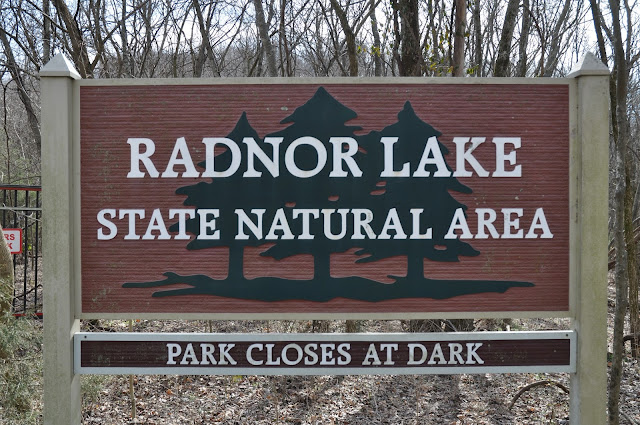Dyer Observatory
A wildlife refuge with extensive biking and hiking trails located in the midst of a large, metropolitan city is a rarity. Located a few hundred yards south of the Inns of Granny White neighborhood is a little gem, Radnor Lake State Park, a 1,332-acre protected Class II Natural Area.
The park traces its beginnings to 1913, when the L&N Railroad bought a thousand-acre tract in the Overton Hills to build an earthen reservoir to supply water for steam engines and livestock in Radnor Yards, as well as private hunting and fishing grounds for company officials and guests. L&N took the first step toward preserving Radnor Lake as a nature area in 1923, when an executive stopped all hunting and fishing on the site and declared it a wildlife sanctuary.
When the land was purchased by a developer in 1962 who intended to develop the site for housing, a grassroots preservation movement began trying to save it, and in 1974, nearly 750 acres were named Tennessee's first natural area and protected ecosystem.
The day-use only park offers unique opportunities to interact with the natural world through wildlife viewing opportunities, environmental education programs, and more than six miles of trails.
Pets, jogging and bicycles are permitted on the Otter Creek Road trail. The Lake Trail is accessible to people with all-terrain wheelchairs.
The park is perfect for nature enthusiasts to observe owls, herons and water fowl as well as many species of amphibians, reptiles and mammals such as mink and otter. Hundreds of species of wildflowers, mosses, fungi, ferns and other plants as well as trees, shrubs and vines add to the natural ecological diversity of the area. Several ranger-led programs are planned throughout the year including canoe floats, wildflower walks, astronomy night hikes, nature hikes, programs on snakes, off-trail land acquisition hikes and birds of prey.
The park traces its beginnings to 1913, when the L&N Railroad bought a thousand-acre tract in the Overton Hills to build an earthen reservoir to supply water for steam engines and livestock in Radnor Yards, as well as private hunting and fishing grounds for company officials and guests. L&N took the first step toward preserving Radnor Lake as a nature area in 1923, when an executive stopped all hunting and fishing on the site and declared it a wildlife sanctuary.
When the land was purchased by a developer in 1962 who intended to develop the site for housing, a grassroots preservation movement began trying to save it, and in 1974, nearly 750 acres were named Tennessee's first natural area and protected ecosystem.
The day-use only park offers unique opportunities to interact with the natural world through wildlife viewing opportunities, environmental education programs, and more than six miles of trails.
Pets, jogging and bicycles are permitted on the Otter Creek Road trail. The Lake Trail is accessible to people with all-terrain wheelchairs.
(click on photo to enlarge)
The park is perfect for nature enthusiasts to observe owls, herons and water fowl as well as many species of amphibians, reptiles and mammals such as mink and otter. Hundreds of species of wildflowers, mosses, fungi, ferns and other plants as well as trees, shrubs and vines add to the natural ecological diversity of the area. Several ranger-led programs are planned throughout the year including canoe floats, wildflower walks, astronomy night hikes, nature hikes, programs on snakes, off-trail land acquisition hikes and birds of prey.
The Historic Valve House Trail opened in 2011. Located a short 10 minute hike from the Walter Criley Visitor Center, this interpretive trail will soon include the Historic Valve-House, once construction is complete.
Another new addition, the Barbara J. Mapp Aviary Education Center, opened in May 2015. It houses several birds of prey ranging from great horned owls to bald eagles.
The Friends of Radnor Lake help protect, preserve and promote the natural integrity of the park through a variety of environmental efforts. Thanks to their generosity and support, Radnor Lake continues to be a place of natural beauty and wonder, for all to enjoy.
(Photo courtesy of Vanderbilt University)
Adjacent to Radnor Lake State Park is the Arthur J. Dyer Observatory. Built in 1953, it is an astronomical observatory operated by Vanderbilt University. It features a twenty-four foot dome and twenty-four inch deep space reflecting telescope.
The Dyer Observatory is ranked among the Top 21 Best College Astronomy Observatories and has discovered several stars in its 61 year history.
The observatory was recently listed on the National Register of Historic Places.
The observatory is open to the public throughout the spring and summer.



